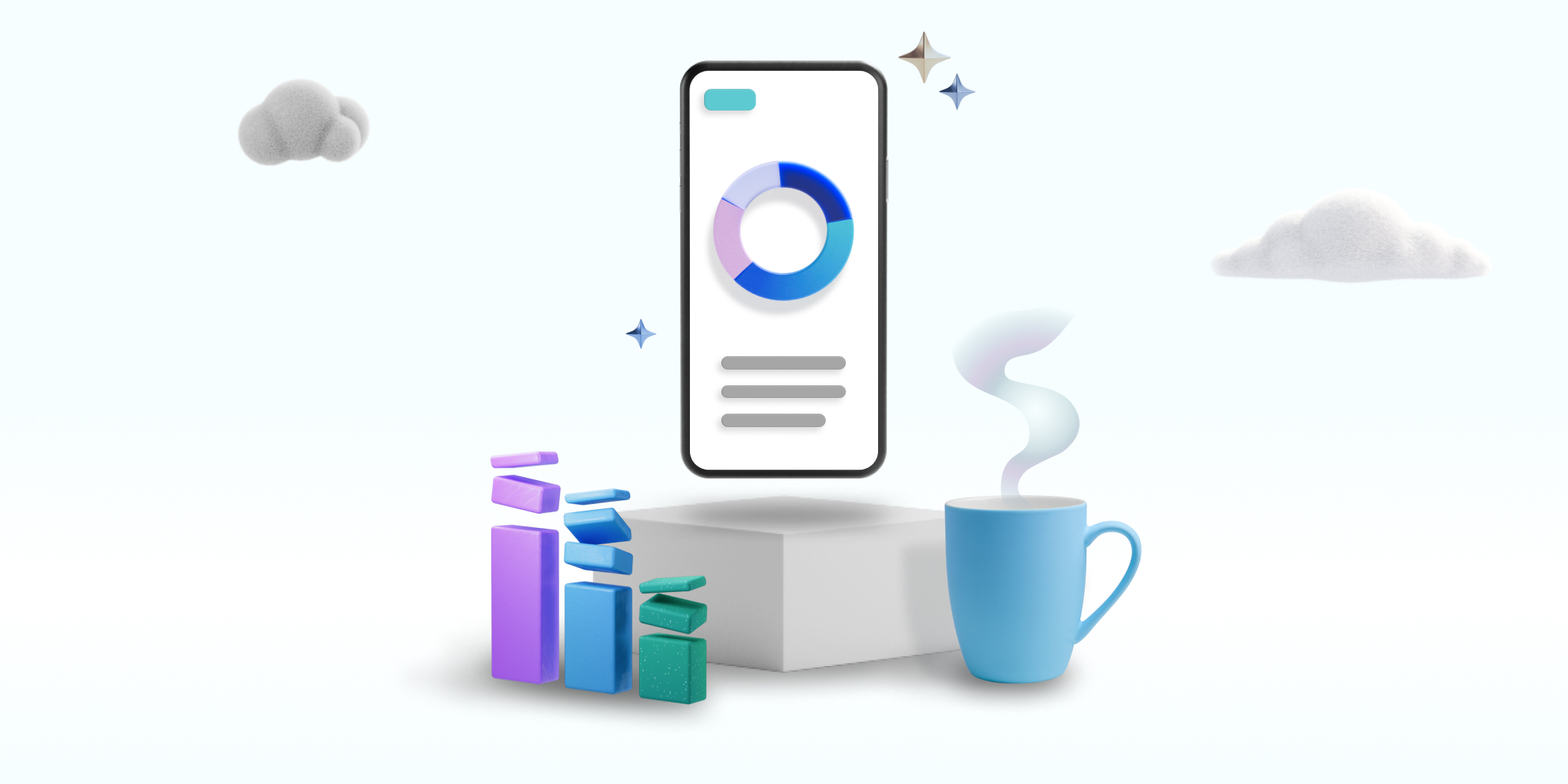What is mobile app analytics?
Mobile analytics is the heartbeat of successful mobile applications! It’s the process that breathes life into your apps, helping you understand user behavior and optimize performance for a truly exhilarating user experience.
Essential for any business striving for app excellence, mobile app analytics empowers you to understand how users interact with your app, which features are a hit, and what challenges they encounter. Armed with these data-driven insights, you’ll have the tools to make meaningful improvements, resulting in a thriving and prosperous app that stands out from the crowd. So, dive into the world of mobile analytics and watch your app take flight!
How do app analytics work?
Mobile analytics is the powerhouse behind your app’s success, working tirelessly to collect and process valuable data. When a user interacts with your app, a treasure trove of information is gathered, encompassing device type, operating system, app version, screen size, approximate location, user ID, session duration, events, errors, and more. All of this data is then sent to a server, where it undergoes analysis and is securely stored.
This aggregated data is transformed through various methods into a goldmine of insights for you, the end user. It’s like having a magic crystal ball that reveals user behavior patterns, preferences, and pain points, enabling you to optimize your app for ultimate user satisfaction and engagement.
While some app analytics rely on video/image analysis, there are more efficient techniques available. For instance, Microsoft Clarity for Android apps utilizes low-level drawing commands to reconstruct walkthrough-style videos of users’ sessions. This brilliant approach minimizes the overhead on network consumption, ensuring your users enjoy a seamless experience without unnecessary burdens.
Why should I use a mobile app analytics tool?

Mobile analytics can help answer questions such as:
– How do users navigate through the app and what features do they use?
– How do users behave differently across different segments, such as platforms, operating systems, locations, or devices?
– How do users react to changes or updates in the app?
– Did my users face any crashes or errors while they are navigating the app?
– which elements are most clicked and which elements are ignored in my app?
Mobile analytics is essential for any app that wants to succeed in the competitive and dynamic mobile market. By using mobile analytics, app developers and marketers can gain valuable insights into user behavior and preferences, and use them to improve their app performance and user satisfaction.
What are the types of mobile analytics?
There are different types of mobile analytics that can provide different insights and benefits. Here are some of the most common ones:
– User analytics: This type of analytics focuses on who the users are, where they come from, how they find the app, what devices and platforms they use, how often they use the product, how long they stay. User analytics can help to segment the audience, identify user personas, optimize user acquisition and retention strategies, and personalize the content and offers.
– Behavioral analytics: This type of analytics focuses on how the users interact with the app, what features they use, what actions they take, what content they consume,and what captures their attention. Engagement analytics can help to measure user satisfaction, loyalty, and advocacy, identify user pain points and preferences, improve user interface and functionality, increase user engagement and retention, and encourage user referrals and reviews.
– Performance analytics: This type of analytics focuses on how the app performs in terms of speed, stability, reliability, compatibility, security, and usability. Performance analytics can help to monitor and troubleshoot technical issues, optimize app performance and quality, ensure compatibility across devices and platforms, enhance security and privacy, and improve user experience and satisfaction.
– Conversion analytics: This type of analytics focuses on how the users complete the desired goals or outcomes of the app, such as making a purchase, signing up for a subscription, downloading a resource, or completing a form. Conversion analytics can help to measure and optimize the conversion funnel, identify and remove conversion barriers, test and improve the design and copy of the app, increase conversion rates and revenue, and evaluate the return on investment (ROI) of the product.
How can different teams in my company use and benefit from mobile app analytics?
Different teams may use mobile analytics for different purposes, depending on their goals and challenges. Here are some examples of how mobile analytics can help product teams achieve success:
Product teams
Product managers can use mobile analytics to understand how users interact with the app, what features are most popular, what pain points or issues they encounter, and how to improve the user experience and retention. A product team that is launching a new app or feature may use mobile analytics to test and validate their assumptions and optimize their product-market fit.
Technical teams
A development team that is troubleshooting a technical issue or a user complaint may use mobile analytics to diagnose and resolve the problem as quickly as possible. They may use metrics such as crash rate, error rate, and device processing powers, to identify the root cause of the issue, and test and deploy fixes. Developers can also use mobile analytics to monitor the app’s stability, performance, and quality, identify and fix bugs or errors, optimize the app’s speed and resource consumption, and implement new functionalities or integrations.
Marketing teams
Marketers can use mobile analytics to track the app’s acquisition, engagement, and conversion rates, segment and target users based on their behavior and preferences, measure the effectiveness of marketing campaigns and channels, and increase the app’s visibility and reach.
How to Effectively Utilize Mobile App Analytics for Your Business?
Here are some tips to help you get started:
- Define your app goals and key performance indicators (KPIs): Before you can measure and analyze your app data, you need to have a clear idea of what you want to achieve with your app and how you will track your progress. For example, some common app goals are increasing user satisfaction, engagement, retention, and conversions.
- Determine your budget: how much are you willing to spend and which features are the most essential to you? Most tools have different traffic intervals and different features for premium subscriptions. Microsoft Clarity is a 100% tool that will never ask you for upgrades.
- Choose the right mobile app analytics tools: There are many mobile app analytics tools available in the market, each with its own strengths and weaknesses. Depending on your app goals and KPIs, you may need different types of tools to collect and analyze your app performance data. For example, some tools are specialized in collecting and analyzing app traffic, such as Google Analytics for Firebase. Some tools are focused on analyzing user behavior such as Microsoft Clarity or UXcam. Some tools are designed to measure app performance and quality, such as Crashlytics. Microsoft Clarity Mobile SDK gives you everything you need in one single platform. Learn more about the features here.
- Implement mobile app analytics correctly. Ensure that your app has the necessary permissions to access device data, that your app events and parameters are named consistently and accurately, and that your app privacy and security policies are compliant with the relevant regulations.
- Act on your mobile app analytics insights. The final step of effectively utilizing mobile app analytics for your business is to act on the insights you have gained from your app data analysis. You can use the insights to improve your app design, functionality, usability, content, marketing, monetization, or customer service. You can also use the insights to validate or invalidate your assumptions or hypotheses about your app or users. You can also use the insights to set new goals or KPIs for your app or business.
Mobile app analytics are often business-critical for any business that wants to succeed in the competitive and dynamic mobile market. By following these tips, you can effectively utilize mobile app analytics for your business and achieve your desired outcomes with your app.
